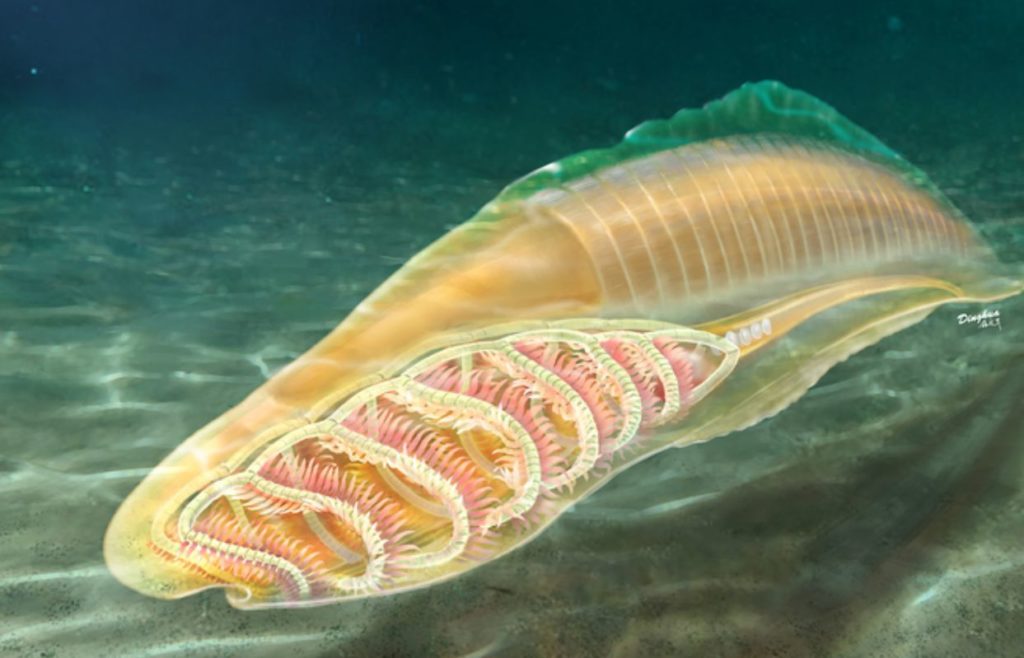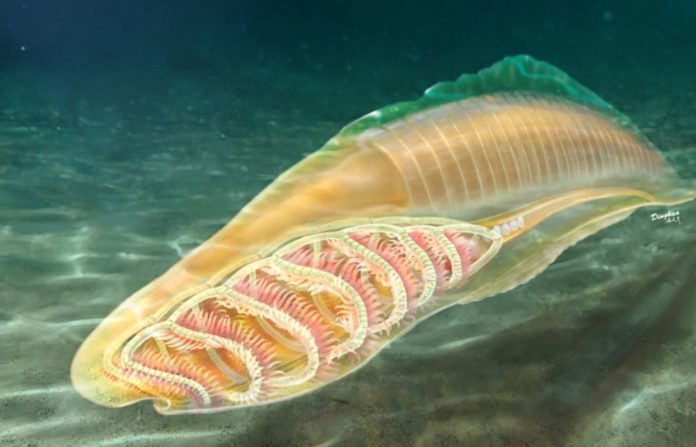Scientists have long been perplexed by the gap in the fossil record that would explain the development of invertebrates to vertebrates. Vertebrates—animals with backbones and skulls—include fish, amphibians, reptiles, birds, mammals, and people. Animals lacking backbones are known as invertebrates.
Scientists have been trying to figure out how invertebrates evolved into vertebrates for millennia, as well as what the earliest vertebrates looked like.
A study of yunnanozoans, extinct organisms from the early Cambrian period (518 million years ago), has shown evidence that they are the oldest known stem vertebrates. Those extinct vertebrates that are still extremely closely related to extant vertebrates are referred to as stem vertebrates.
The study’s findings were published today in the journal Science by a team of researchers from the Nanjing Institute of Geology and Paleontology, Chinese Academy of Sciences, and Nanjing University.

As scientists have researched how vertebrates evolved over time, the pharyngeal arches, which create elements of the face and neck such as muscles, bone, and connective tissue, have been a prominent subject of research.
Researchers think that the pharyngeal arch began as a single piece of cartilage in the ancestors of vertebrates, like the chordate amphioxus, a close relative of vertebrates that is an invertebrate. But no one knows for sure if our ancient ancestors really had this kind of body structure.
The research team investigated the fossils of the soft-bodied yunnanozoans discovered in the Yunnan Province, China, in an effort to better comprehend the role of the pharyngeal arch in early vertebrates.
Researchers have researched yunnanozoans for many years, coming to various interpretations of the anatomy of the organism. There has been discussion on the affinity of yunnanozoans for around three decades, and numerous papers have been published supporting various viewpoints, including four in Nature and Science.
The research team wanted to look at newly found fossils of yunnanozoans in ways that had never been done before. They did this by doing a high-resolution anatomical and ultrastructural study.

The 127 samples they looked at had well-preserved carbonaceous remains, which let the team do detailed geochemical and ultrastructural analyses.
The group used energy-dispersive X-ray spectroscopy, Raman spectrometry, scanning electron microscopy, transmission electron microscopy, Fourier-transform infrared spectroscopy, and X-ray microtomography on the fossil specimens.
Their study showed that yunnanozoans have cellular cartilages in their pharynx, which is something that was thought to be unique to vertebrates. The findings of the study indicate that yunnanozoans are stem vertebrates.
Based on their findings, yunnanozoans can be considered the earliest and most primitive ancestors of the crown-group vertebrates.
The team’s research revealed that all seven of the pharyngeal arches in the yunnanozoan fossils are comparable to one another. All of the arches have filaments and segments that resemble bamboo.
The horizontal dorsal and ventral rods connect the arches next to each other to make a basket. Lampreys and hagfishes, which do not have jaws, have a pharyngeal skeleton that looks like a basket.
“Two types of pharyngeal skeletons—the basket-like and isolated types—occur in the Cambrian and living vertebrates. This implies that the form of pharyngeal skeletons has a more complex early evolutionary history than previously thought,” adds TIAN Qingyi, the first author of the study.
The researchers gained fresh insights into the intricate construction of the pharyngeal arches as a result of their investigation. The team’s new anatomical observations corroborate the evolutionary location of yunnanozoans at the very base of the vertebrate tree of life.
Image Credit: ZHAO Fangchen
You were reading: New Research Reveals The Oldest Known Stem Vertebrates
